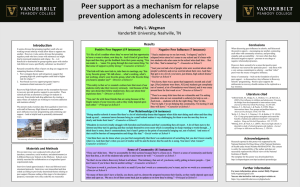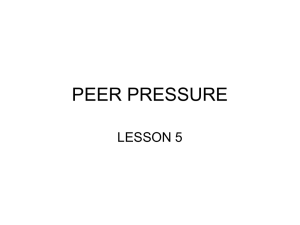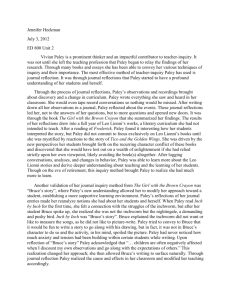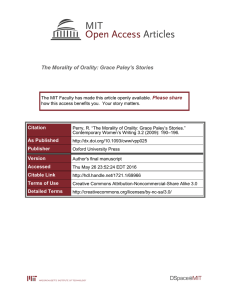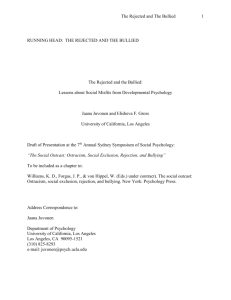Social Exclusion in the Classroom: Teachers and Students as
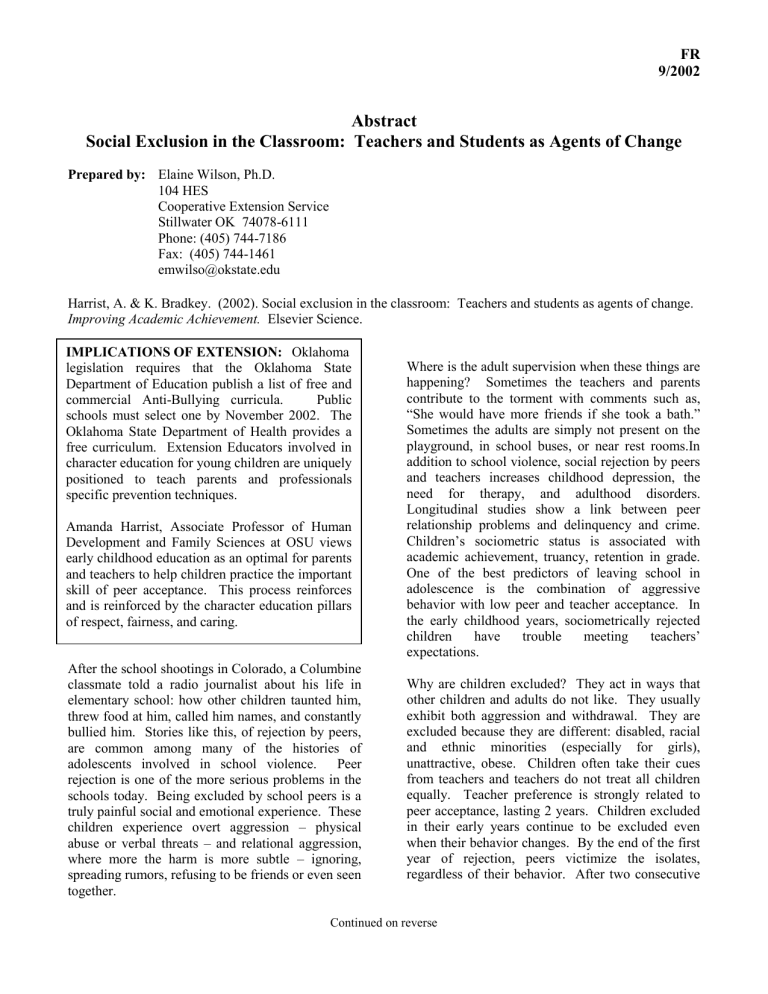
FR
9/2002
Abstract
Social Exclusion in the Classroom: Teachers and Students as Agents of Change
Prepared by: Elaine Wilson, Ph.D.
104 HES
Cooperative Extension Service
Stillwater OK 74078-6111
Phone: (405) 744-7186
Fax: (405) 744-1461 emwilso@okstate.edu
Harrist, A. & K. Bradkey. (2002). Social exclusion in the classroom: Teachers and students as agents of change.
Improving Academic Achievement. Elsevier Science.
IMPLICATIONS OF EXTENSION: Oklahoma legislation requires that the Oklahoma State
Department of Education publish a list of free and commercial Anti-Bullying curricula. Public schools must select one by November 2002. The
Oklahoma State Department of Health provides a free curriculum. Extension Educators involved in character education for young children are uniquely
Where is the adult supervision when these things are happening? Sometimes the teachers and parents contribute to the torment with comments such as,
“She would have more friends if she took a bath.”
Sometimes the adults are simply not present on the playground, in school buses, or near rest rooms.In positioned to teach parents and professionals specific prevention techniques.
Amanda Harrist, Associate Professor of Human addition to school violence, social rejection by peers and teachers increases childhood depression, the need for therapy, and adulthood disorders.
Longitudinal studies show a link between peer relationship problems and delinquency and crime.
Children’s sociometric status is associated with
Development and Family Sciences at OSU views early childhood education as an optimal for parents and teachers to help children practice the important skill of peer acceptance. This process reinforces and is reinforced by the character education pillars of respect, fairness, and caring. academic achievement, truancy, retention in grade.
One of the best predictors of leaving school in adolescence is the combination of aggressive behavior with low peer and teacher acceptance. In the early childhood years, sociometrically rejected children have trouble meeting teachers’
After the school shootings in Colorado, a Columbine classmate told a radio journalist about his life in elementary school: how other children taunted him, expectations.
Why are children excluded? They act in ways that other children and adults do not like. They usually threw food at him, called him names, and constantly bullied him. Stories like this, of rejection by peers, are common among many of the histories of adolescents involved in school violence. Peer exhibit both aggression and withdrawal. They are excluded because they are different: disabled, racial and ethnic minorities (especially for girls), unattractive, obese. Children often take their cues rejection is one of the more serious problems in the schools today. Being excluded by school peers is a truly painful social and emotional experience. These children experience overt aggression – physical abuse or verbal threats – and relational aggression, where more the harm is more subtle – ignoring, spreading rumors, refusing to be friends or even seen together. from teachers and teachers do not treat all children equally. Teacher preference is strongly related to peer acceptance, lasting 2 years. Children excluded in their early years continue to be excluded even when their behavior changes. By the end of the first year of rejection, peers victimize the isolates, regardless of their behavior. After two consecutive
Continued on reverse
years of rejection, the experience of rejection creates a permanent downward spiral for the child.
There are two types of current interventions. Most target changing the unaccepted child rather than dealing with the behavior of the peer group. The child may be taught more socially appropriate behaviors (eye contact, smiling) directly or the intervention may focus on the underlying causes of the child’s behavior (self esteem, self control).
Another approach is peer mediation. The rejected child is paired with a peer trainer who serves as a role model to change the outcast child’s behavior.
These costly and time consuming attempts rarely succeed.
This study investigates an intervention with the abusive peer group itself, not just the victim. The model is Vivian Paley’s book, You Can’t Say You
Can’t Play. Paley (p.3) questions why teachers allow children to reject each other, why, “long after hitting and name-calling have been outlawed by teachers, a more damaging phenomenon is allowed to take root”? Exclusion becomes a habit for the children doing the excluding. Paley’s rule is sensitive to the sadness and pain excluded children experience every day that they come to school. On the other hand, children and teachers want to choose their own friends and friendship comes before fairness.
Paley counters that at school, fairness comes before friendship. Naturally the excluded children like the rule and the bosses, feeling the loss of power, are totally against it. One of the bosses,
Lisa, asks if everyone is allowed to play, “then what’s the whole point of playing?” (p20).
Paley uses the fairy tale about a bird named Magpie and the Kingdom of Tall Pines to introduce the rule to her Kindergarten classroom. Common practices such as “time out” discipline and choosing roles or teams had to be revised. By the end of the academic year, the children were treating each other more kindly and with more respect. Beginning early, at
Kindergarten, is not only better for the potential victims who gain social acceptance and friends and avoid a lifelong reputation and isolation; it helps the peer groups by establishing a fairness habit.
Using 10 Kindergarten classes, Harrist and Bradley compared sociometric data in intervention classrooms that used the Paley model with control
Continued on reverse
FR
9/2002 classrooms. They found no difference in playground behavior or teachers’ reports of isolation.
8.
Classmates rating of how much they like to play with each other increased significantly in the intervention classes. Children in the intervention classes as a group were more dissatisfied by the end of the year. They were not happy about liking to play with each other. The isolates were satisfied because they became included. It was the bosses who were unhappy with the changes, or at least the discussion of changes, especially if they were in classes where teachers were less committed to the intervention.
Suggestions:
1. Begin as early as possible, the first week of classes.
2. Focus on comprehensive training for teachers about the principles, and mechanics behind the intervention.
3. Teachers need to think about classroom practices that impede or facilitate the inclusion principle.
4. Student preparation needs to be in-depth.
5. Generalize the rule so that every child gets to play at all levels.
6. Consider how to help both the isolates and the bosses.
7. Assess fidelity of teacher conviction and commitment to the intervention.
Involve parents.


